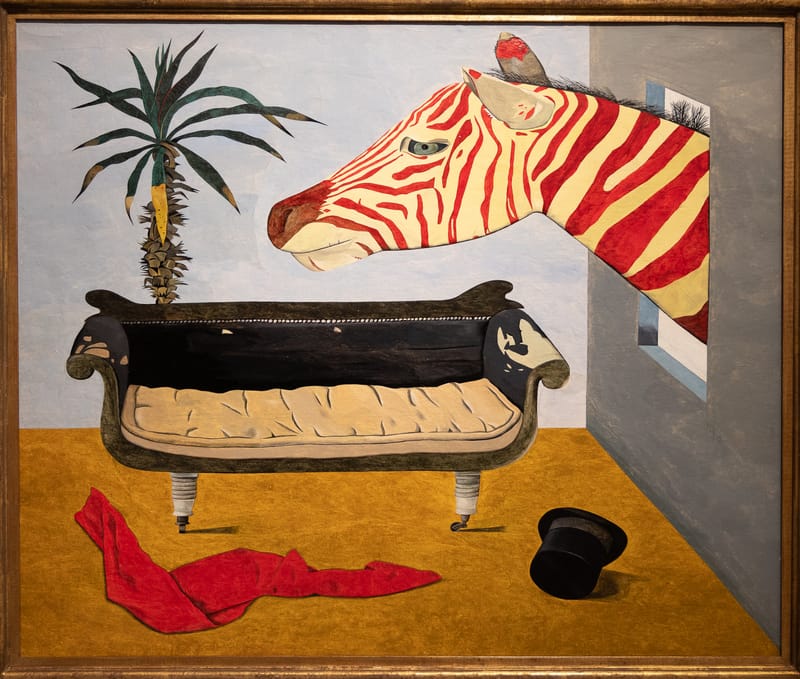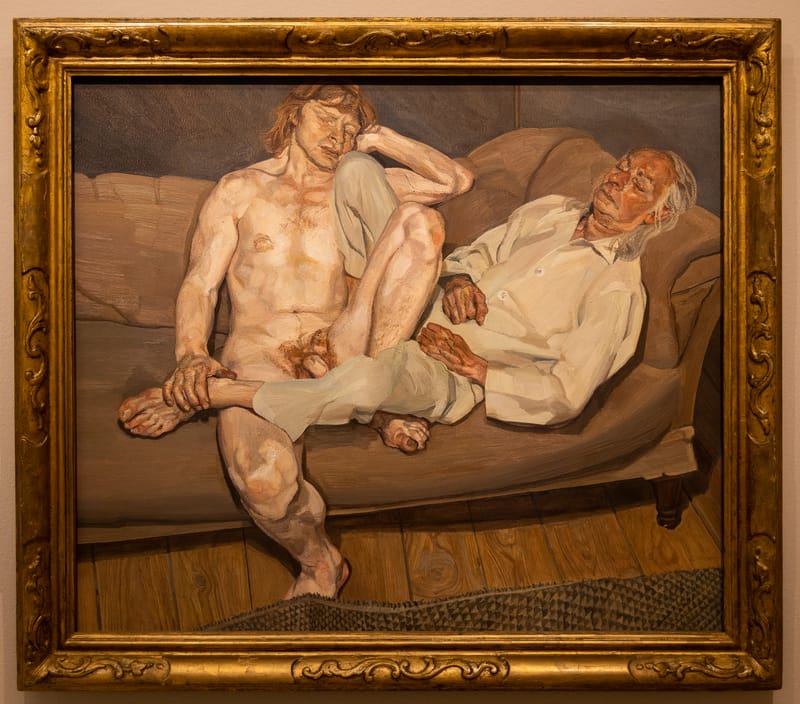Lucian Freud
18/08/2024
Lucian Freud
To mark the centenary of the birth of the British painter Lucian Freud (1922-2011) the Museo Nacional Thyssen-Bornemisza and the National Gallery in London are presenting a retrospective that features around 50 works. Freud, one of the most outstanding figurative painters of the modern age, was born in Berlin and emigrated to London with his family in 1933, when the Nazis came to power. In his youth the family environment provided Lucian with a hefty and varied cultural background: his father was a renowned architect, his mother studied art history, and his grandfather was the famous inventor of psychoanalysis, Sigmund Freud. In adulthood the artist grew to be a legend on account of his frenetic personal life, which saw him move with equal ease in aristocratic circles and the underworld. From the outset, Freud favoured figurative art, concentrating on portraying human beings. Self-portraits, portraits and nudes account for most of his artistic production. His oeuvre has traditionally been linked to the so-called School of London, which was not so much a school as a group of London-based figurative artists such as Francis Bacon, Frank Auerbach, Leon Kossoff and Michael Andrews. We can sense in Freud’s work a certain desire to measure himself against the great tradition of painting. References to celebrated masters ranging from Holbein, Cranach, Dürer, Hals, Rembrandt and Titian to Watteau, Courbet, Rodin and Cézanne can be traced in his oeuvre. His painting was a constant quest for the truth, which led him always to work from life, in front of the subject, using a language that combines insolence and independence, sometimes overstepping the limits of decency. The exhibition is divided into various sections that offer an approximately chronological survey of the painter’s evolution and subject matter that span the seven decades of the artist’s career: Becoming Freud, devoted to the artist’s early works which are notably figurative; Early portraits, works that already reveal Freud’s desire to capture the essence of his sitters; Intimacy, which focuses on his preference for depicting people from his close circle; Power, where portraits of individuals whom he agreed to paint on the basis that they accepted his conditions for working are included; The Studio, Freud’s creative space which became a subject in his art; and Flesh, featuring the last naked portraits, so physically displeasing that they may seem prurient. Exhibition organized by Museo Nacional Thyssen-Bornemisza and The National Gallery, London

































